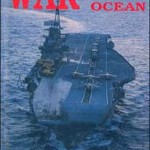Despite lessons from the past when India was subjugated by major sea powers, modern India is not particularly known for a maritime outlook. Recent events go further to underscore the ‘sea-blindness’ of its policymakers, which bears the potential to undermine not only India’s ‘vital’ interests, but also its foremost strategic imperative of ‘self-preservation’.
Securing ‘Vital’ Interests
On 15 September 2008, Somalin pirates hijacked MT Stolt Valor and held 18 of its Indian crewmen hostage. The Indian government took more than a month to respond. Furthermore, it was evident — at least from media reports — that its decision to dispatch warships for anti-piracy patrol was driven neither by the crisis per se nor by the recommendations of its Navy. It seemed to be impelled by public opinion mobilized by the wife of Stolt Valor’s master.
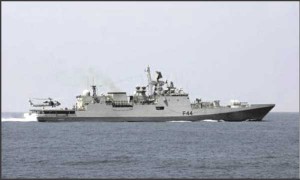 The response was not only ‘too late’ but ‘too little’ as well. Even factoring the presence of warships from other countries, the sea area in question is too vast for a few warships to prevent attacks by the 1,000-odd Somali pirates operating in 25 to 30 groups. Once a merchant ship, fishing boat or yacht has been hijacked and taken into Somalia’s territorial waters, patrolling is pointless from the perspective of the victim vessel. A covert rescue operation by Special Forces in territorial waters then becomes exigent.
The response was not only ‘too late’ but ‘too little’ as well. Even factoring the presence of warships from other countries, the sea area in question is too vast for a few warships to prevent attacks by the 1,000-odd Somali pirates operating in 25 to 30 groups. Once a merchant ship, fishing boat or yacht has been hijacked and taken into Somalia’s territorial waters, patrolling is pointless from the perspective of the victim vessel. A covert rescue operation by Special Forces in territorial waters then becomes exigent.
However, New Delhi dithered to task its Navy for something that was legally permitted and more importantly, encouraged by UN Security Council Resolution (UNSCR) 1816 of June 2008. In contrast, many other seafaring nations like Denmark and France used the said legal provision for commando action in Somali waters, leading to rescue of their citizens and capture or elimination of pirates.
Of course, there are risks involved in such an operation, such as in terms of adverse international ramifications of collateral damage. But if the use of force is ‘proportionate’, its legitimacy can be justified. Even a failed mission is invaluable for deterring pirate activity.
It was thus hardly surprising that by the time UNSCR 1816 (June 2008) neared the end of its six-month life, it had made little progress to rein in the pirates. The success achieved by Indian warships to neutralise some of the criminals is commendable, but it has hardly made a difference, perhaps even in terms of deterrence.
In December 2008, concerted efforts of the US, Belgium, France, Greece, Liberia and South Korea led the UN Security Council to adopt UNSCR 1851, which went further to authorize international military action against pirates on Somalia’s land territory. But India — acclaimed as a “regional naval power” — was no where on the scene to display the will for a similar response.
The “˜sea-blindness in India seems to be a systemic phenomenon. Much that one might tend to believe, the sea no longer presents a barrier for trans-national low-intensity threats that seek to undermine Indias survival as a nation-state.
This was not the first time that Indian lives were held hostage by Somali pirates. There have been many such occasions since February 2006 when the Indian ship MV Bhaktisagar was hijacked along with its 22 crewmen. In all cases, the pirates got away with substantial sums of money as ransom. Bitter experiences of terrorism have lately led Indian policymakers to discard negotiation as an option in hostage situations. However, when a situation relates to piracy, there seems to be no resort other than waiting for shipping company to pay ransom money to the pirates. There is a little realisation that this is akin to whetting the pirates’ appetite and providing nourishment to a ‘monster’.
Piracy off Somalia and the Gulf of Aden became rampant since the first half of 2005. This maritime area falls well within India’s primary area of strategic interest, which has often been articulated by its political leadership. Sixty percent of its trade transits through these seas. Besides, considering that India contributes more than 1,00,000 seafarers to the global shipping fleet (11 percent of world’s mercantile human resource), many of the 25,000-odd merchant vessels traversing these seas each year are crewed by Indians.
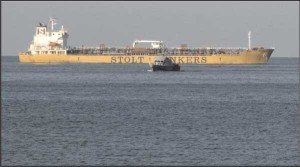 Despite much at stake in the area, it took India a long time and unusual circumstances to deploy its naval power; and that too, sans its full potential. Its well-trained and world renowned Marine Commandos (MARCOS) have since been employed on the warships on patrol for ‘visit and search’ if and when the warship succeeds in making the pirates surrender.
Despite much at stake in the area, it took India a long time and unusual circumstances to deploy its naval power; and that too, sans its full potential. Its well-trained and world renowned Marine Commandos (MARCOS) have since been employed on the warships on patrol for ‘visit and search’ if and when the warship succeeds in making the pirates surrender.
This is a task of a “ship’s boarding party”, rather than elite MARCOS, who have been imparted specialized training for hostage rescue.
This indicates that despite possessing the capability, India is not yet poised to secure its expanding vital overseas interests. Perhaps, this is due to the absence of will on the part of Indian decision-makers to take calculated risks, besides their lack of awareness of military operations, especially those relating to the maritime realm.
The Imperative of ‘Self-Preservation’
Now let’s appraise India’s ability to respond to trans-national cross-coast threats to its homeland. Here, there is probably a sense of complacency among Indian policymakers since the probability of traditional military threat manifesting through an amphibious assault is low. While this perception is not unwarranted, it does not factor two stark realities with regard to low-intensity threats. Firstly, many of India’s island territories are uninhabited and remain extremely vulnerable. Secondly, non-state actors from neighbouring countries retain the advantage of penetrating from seawards incognito by mixing with the local populace engaged in dense maritime activity.
if the use of force is “˜proportionate, its legitimacy can be justified. Even a failed mission is invaluable for deterring pirate activity.
To attack Mumbai, the terrorist-laden mother ship made an unimpeded transit across all Indian maritime zones well into its sovereign 12-nautical mile (nm) territorial sea. The terrorists even dared to conduct a mid-sea transfer into the inflatable craft barely 3 nm off the coast, which was close enough to be observed from the shore without optical aids. Evidently, the planners of the terrorist strike were confident that they would not be detected.
However, holding the Navy or Coast Guard accountable for it indicates the lack of awareness of ‘matters maritime’. By its inherent nature, the ocean is the most unregulated domain on earth. There are more than 50,000 fishing vessels are registered in Gujarat and Maharashtra, and an equal number of these are unregistered. Almost all of these rely on shallow-water ‘catch’ in territorial waters. The territorial sea adjoining the two states of about 37,000 sq km itself translates into about three fishing boats operating in each sq km of the area. In practical terms, many areas adjoining fishing villages and ports have hundreds of these boats operating across the entire visual seafront.
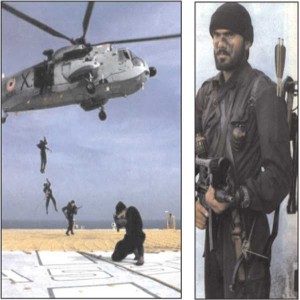 Added to it are the other equally intense maritime-economic activities: offshore supply vessels (OSV) catering for extraction of hydrocarbon resources and those involved in coastal and overseas trade. Given the practically infeasible proposition of boarding and searching each vessel, any open-ended intelligence input of a “probable sea-borne infiltration” (as was provided in this case) would hardly suffice for any maritime security force to sift the terrorist-borne vessel from those engaged in legitimate activity.
Added to it are the other equally intense maritime-economic activities: offshore supply vessels (OSV) catering for extraction of hydrocarbon resources and those involved in coastal and overseas trade. Given the practically infeasible proposition of boarding and searching each vessel, any open-ended intelligence input of a “probable sea-borne infiltration” (as was provided in this case) would hardly suffice for any maritime security force to sift the terrorist-borne vessel from those engaged in legitimate activity.
Even with the latest technological means currently available worldwide, achieving a complete domain awareness of the maritime activity in busy coastal areas is virtually impossible. Major maritime nations have lately initiated intense efforts to improve such awareness through means like coastal radar chains, complemented by electronic identification equipment on vessels engaged in legitimate activity.
However, these measures would take time to take effect, even if the impediment of astronomical costs involved can be overcome by a developing country like India. In the interim, it would be more realistic to sanitize the sea-front up to a couple of nautical miles from the coast, with particular emphasis on the seaward approach routes to ports.
Towards this end, following the landing of explosives on Maharashtra coast in 1993 (that led to Mumbai bomb blasts), India’s eight coastal (provincial) states were directed to establish marine police stations and allocated funds for purchase of patrol boats. This was essential because the Navy and Coast Guard are not meant for coastal defence. (The word “coast-guard” is actually a misnomer).
Till date however, barring one or two states, none have implemented coastal patrols on the premise that the operating and maintenance costs are too high to be borne by the state government. Ironically, while these states have been unwilling to give up their jurisdiction/authority over their respective 12-nautical mile seaward area to the central government agencies, many of their new boats have been junked without having even been put into water.
Evidently, the gravity of the threat was never realised. Despite the harrowing experience of 1993, the government of Maharashtra, which prides itself in governing the land of the 18th century Maratha Admiral Kanoji Angre with strong maritime traditions, has been among the foremost of the defaulters.
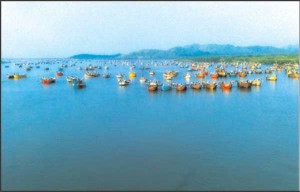 On its part, the central government has adopted a laissez faire attitude to the complacency of the states. Also, until after the Mumbai terror attack, national law (Coastal Regulation Zone notification of 1991) did not permit the state marine police to build police stations within 500 metres from the coast. Sadly thus, long-term environmental protection was given precedence over the looming threat from seaward.
On its part, the central government has adopted a laissez faire attitude to the complacency of the states. Also, until after the Mumbai terror attack, national law (Coastal Regulation Zone notification of 1991) did not permit the state marine police to build police stations within 500 metres from the coast. Sadly thus, long-term environmental protection was given precedence over the looming threat from seaward.
Furthermore, despite the Navy and security analysts clamouring for a central apex body to co-ordinate and oversee the security-related activities of various departments/ministries involved with maritime issues, ‘static inertia’ in the government machinery has been too overwhelming for this essential change.
The ‘sea-blindness’ in India seems to be a systemic phenomenon. At the outset, we as Indians must acknowledge our ‘sea-blindness’ before we set out to put our house in order. Much against what one might tend to believe, the sea no longer presents a barrier for trans-national low-intensity threats that seek to undermine India’s survival as a nation-state. The maritime domain cannot remain the ‘weakest link’ in the chain of India’s comprehensive security.




